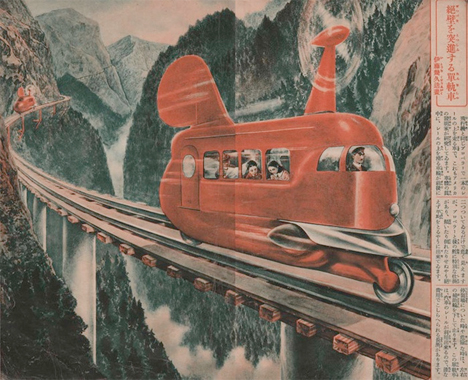Ein Beitrag von: Lisa Zappe
Inspiriert vom Leben, meinen Mitmenschen und Gefühlen wie Angst, Zuneigung, Wut, Liebe und Schmerz, fotografiere ich mich regelmäßig durch mein Universum.
Man sagt mir immer wieder, dass meine Bilder einen hohen Wiedererkennungswert hätten, jedoch kann wohl jedermann schnell erkennen, dass ich mich weder auf ein Sujet, noch auf eine Technik festlegen mag. Und genau das liegt mir auch unbedingt am Herzen.
Viel zu neugierig und experimentierfreudig bin ich, um schon jetzt genau wissen zu wollen, was ich will. Viel mehr schließe ich aus, was ich gerade nicht möchte und öffne mich für alles andere.
Was ich nicht möchte, weiß ich jedoch mit großer Bestimmtheit. Ich mag keine Oberflächlichkeit und keine Lügen, mir ist die Schnelllebigkeit unserer heutigen Zeit suspekt und ich versuche, viele der Dinge zu meiden, die dazu da sind, uns von uns selbst abzulenken.
Ich mag die intimen, kreativen und ehrlichen kleinen Momente in meiner Fotografie. Die Momente, in denen wir uns zeigen, unsere Maske etwas fallen lassen und verletzbar werden. Die Momente, in denen wir uns mit Respekt und Empathie begegnen und spüren, dass wir mehr gemeinsam haben als wir glauben.
Und ab und an, eher selten, mache ich völlig kontroverse Bilder, die aber genau dieselbe Thematik aufgreifen. Das mag verunsichern, aber hier kommt eben meine unbändige Experimentierfreude ins Spiel.
Oft höre ich, ich hätte etwas Kindlich-naives, aber auch Bestimmtes, wenn ich mit meiner Kamera auf Motivsuche gehe oder die Menschen in meinem Umfeld ablichte. Ich glaube, diese Beschreibung passt wohl ganz gut zu mir.
In meinem Bildrepertoire findet Ihr sowohl etliche Sofortbilder, als auch analoge und digitale Bildserien (Kleinbild und Mittelformat) in schwarzweiß, monochrom und in Farbe. Einen Teil davon könnt Ihr Euch auf meiner Website und meinem Blog ansehen.

Die analoge Kleinbildfotografie liegt mir derzeit besonders am Herzen. Ich genieße es, wann immer ich Zeit finde, mit meiner Olympus besondere Momente einzufangen oder einfach herumzuexperimentieren, um mich danach in meine Dunkelkammer zurückzuziehen und mich von den Ergebnissen überraschen zu lassen.
Neben der Fotografie öffnet sich mir noch ein weiteres Feld, in dem ich meiner Kreativität und Experimentierfreude freien Lauf lassen kann. So entstehen nahezu täglich Collagen/Karten, die hauptsächlich aus einer Kombination von Fotografien und Zeichnungen bestehen.
Außerdem verwende ich für meine Collagen/Karten alles, was mir gerade in den Sinn kommt, wie zum Beispiel Papierreste, Federn, Dinge, die ich in der Natur oder auf Flohmärkten finde und vieles mehr.
Dieser Prozess hat für mich phasenweise etwas Obsessives, dann habe ich nur noch diese Collagen/Karten im Sinn – und so klebe, zeichne, reiße, sammle und schneide ich in jeder freien Sekunde, an jedem Ort, der sich mir bietet. Sei es auf dem Heimweg in der U-Bahn, auf Reisen im Flugzeug oder am Strand, in der Mittagspause im Tiergarten oder in schlaflosen Nächten.
Zu sehen gibt es hier bei kwerfeldein Collagen/Karten aus meiner neuen Serie „Inspiration of the South“, zu der ich auf meiner kürzlichen Portugalreise inspiriert wurde.

Fragt man mich nach Schlüsselmomenten in meiner Fotografie oder den eindrucksvollsten Erlebnissen im Zusammenhang mit ihr, fallen mir sofort drei Situationen ein. Grundsätzlich bin ich absolut beeindruckt vom Vertrauen, das mir – von mehr oder weniger fremden Menschen – immer wieder entgegengebracht wird.
Das erste Mal erlebte ich dies mit der israelischen Musikerin Ofri Brin zu Beginn meiner Fotografie Ende 2007. Mir ist in Erinnerung geblieben, wie unkompliziert sie vor der Kamera war und wie wenig sie damit beschäftigt war, „schön“ aussehen zu wollen. An diesem Tag gerieten wir in einen regelrechten „Kreativrausch“ und mussten uns gegen Mitternacht dazu zwingen, abzubrechen, sonst wären wir wohl irgendwann zusammengebrochen.
Es war ein Schaffensprozess ohne Erwartungen oder irgendwelche Vorgaben. Das fühlte sich sehr befreiend an und mir wurde bewusst, dass es Menschen gibt, die mir vertrauen und mir den Raum lassen, mich fotografisch auszutoben.
Ein weiteres, sehr einprägsames Erlebnis war es, selbst als Modell vor der Kamera zu stehen. So geschehen im November 2007 vor der Kamera von Artur Kowallick. Das war für mich eine große Herausforderung, da Artur ein Fotograf und Künstler ist, der seinen Modellen vieles abverlangt und dem es in seiner Fotografie auch darum geht, Grenzen zu überschreiten.
Auch hier spielte das Thema Vertrauen erneut eine übergeordnete Rolle. Zudem bin ich durch ihn sowohl in die Welt der analogen Fotografie, als auch tiefer in die Sphäre der künstlerischen Fotografie eingetaucht.
Ein drittes, und damit das aktuellste, Erlebnis war eine einwöchige Reise nach Sardinien, gemeinsam mit der Schauspielerin Sophie Bogdan. Eigentlich kam alles recht spontan und auch etwas chaotisch zustande. Aber auf Sardinien angekommen, entstand das Gefühl von grenzenloser kreativer Freiheit. Mit viel Zeit im Gepäck, toller Kulisse, ein paar Kleinbildfilmen und einer Muse an meiner Seite entstand ein ganz neues Gefühl des kreativen Arbeitens.

Ohne irgendwelche Pläne, Erwartungen, Zeitdruck oder Abhängigkeiten konnten so Bilder entstehen und zwar klare, klassische und auf das wesentliche reduzierte Bilder. Und auch hier wäre es ohne das Vertrauen von Sophie Bogdan in mich und meine Fotografie unmöglich gewesen, solche intimen Situationen und Bilder entstehen zu lassen.
Dieses Vertrauen ist für mich niemals selbstverständlich, deswegen gehe ich behutsam damit um, respektiere die Grenzen der Modelle und habe begriffen, dass dies der Schlüssel zu meinen Bildern ist.

kwerfeldein – Fotografie Magazin


































You must be logged in to post a comment.